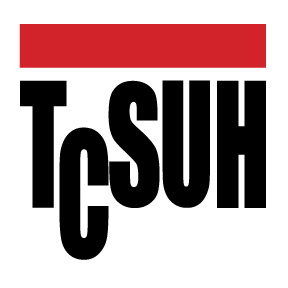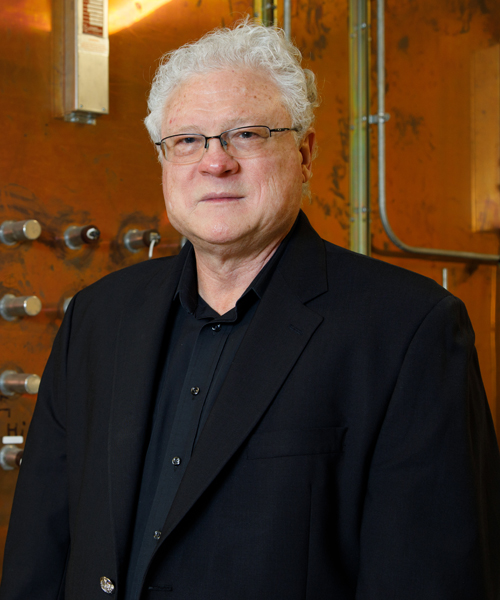TcSUH EventS

TcSUH Annual Student Research Symposium
36th Semiannual TcSUH Student Symposium and Holiday Buffet
by: TcSUH Presenters
Date: Friday December 19, 2008
Time: 1:00 pm – 4:30 pm
Location: Houston Science Center – Building 593 — Room 102
Overview
All members of TCSUH are invited to attend the 36th Semiannual Student Symposium for presentations of original student work.
The Student Symposium will begin at 1:00 p.m. with an introduction by Prof. Allan Jacobson. The juried competition will then continue with a series of 15-minute presentations representing novel work by undergraduate and graduate students from TcSUH laboratories. A 5-minute Q&A will follow each presentation. A Symposium Program, including the schedule and abstracts for each presentation, will be provided at the door. Prize winners will be announced at 4:40 p.m.
The Holiday Buffet for all TcSUH faculty, staff and students will precede the competition from 11:30 a.m. until 1:00 p.m. RSVP to Annie at x38210.
Download: Event PDF
Back to TcSUH News & Events

Special Seminar
Magnetotransport in Heavy Fermion Metals CeMIn5 (M = Co, Ir): The Influence of Antiferromagnetic Fluctuations
by: Steffen Wirth
Date: Thursday November 06, 2008
Time: 12:00 pm – 1:00 pm
Location: Houston Science Center – Building 593 — Room 102
Overview
Heavy fermion metals are often characterized by a variety of relevant energy scales and competing interactions which may result in such fascinating phenomena as quantum criticality and unconventional superconductivity. Therefore, these materials have advanced to suitable model systems by means of which electronic interactions can be studied in detail. This will be discussed for two classes of heavy fermion metals: First, results of detailed magneto-transport investigations on YbRh2Si2 will be described. In the second part, we present an overview of magnetotransport measurements on CeCoIn5 and CeIrIn5. Pressure-dependent Hall measurements on CeCoIn5 exhibit a well developed feature that can unambiguously be related to spin fluctuations associated with the departure from Landau Fermi liquid behavior. Magnetotransport measurements on CeIrIn5 indicate a precursor state to superconductivity. The relation of this precursor state to the so-called pseudogap in high-TC cuprate superconductors will be discussed.
Back to TcSUH News & Events

Bi-Weekly Seminar
Mechanisms and Detection of Biological Molecular Motors
Date: Friday October 31, 2008
Time: 12:00 pm – 1:00 pm
Location: Houston Science Center – Building 593 — Room 102
Overview
Rotary motors, including ATP synthase and the bacterial flagellar motor, play critical roles in living organisms. ATP synthase produces ATP, life's chemical currency of energy, in all three domains of life - bacteria, archaea, and eukarya. In humans, ATP synthase operates in the inner membranes of mitochondria. I will describe our recently developed electric field driven torque model of ion-driven rotary motors. The model predicts a scaling law that relates torque to the number of ion-carrying subunits in the rotor, the number of stators, and the ion motive force across the membrane. When the F0 complex of ATP synthase is coupled to F1, the model predicts a critical proton motive force below which ATP production drops to zero. In a human, such a drop in ATP would lead to unconsciousness and, eventually, death. We have also been measuring electromagnetic properties, such as impedance and harmonic responses, of live cells, mitochondria, and chloroplasts, in an effort to detect activity of active enzymes and changes in membrane potential. Dysfunction of mitochondrial enzymes has been implicated in type-2 diabetes, cancer, heart disease, Alzheimer's disease, and numerous specific mitochondrial disorders. Therefore, improved understanding of ATP synthase and other enzymes of mitochondrial respiratory chain is broadly significant to human health.
Back to TcSUH News & Events
Special Seminar
Brief Overview of Recent Developments on Iron-based Superconductors
by: Prof. Yan Chen
Date: Friday October 03, 2008
Time: 12:00 pm – 1:00 pm
Location: Houston Science Center – Building 593 — Room 102
Overview
Superconductivity has always attracted considerable attention from people in various fields due to its striking quantum phenomena. The recent discovery of high-temperature superconductivity in the iron-based pnictide materials has made a significant impact in the field of condensed matter physics. The superconducting transition temperature has been quickly raised to about 55K and this novel superconductor does not belong to the same categories as those of known superconductors such as copper oxide high-Tc superconductors and conventional BCS-type superconductors. In this talk, I will give a very brief introduction to the recent research progress as well as a perspective on these new iron-based superconductors, in particular, the theoretical and experimental efforts toward cracking the mechanism.
Back to TcSUH News & Events
Special Seminar
Cluster-based Model, a New Route Towards Description of Complex Atomic Structures
by: Prof. Chuang Dong
Date: Friday September 26, 2008
Time: 12:00 pm – 1:00 pm
Location: Houston Science Center – Building 593 — Room 102
Overview
Atomic structures are generally described by crystallography, which is entirely based on planar periodicity. However such a method largely fails in describing complex atomic structures such as complex metallic alloys and disordered systems. Alternative to planar periodicity is spherical periodicity arising from resonance between electron wave and static atomic strictures, which has been proven widely present in disordered systems. One unique advantage is that only local 1st-neighbor cluster structure information is needed to depict the global structure. It implies that a structure, no matter how complex it can be from crystallographic viewpoint, consists simply of a cluster plus a few glue atoms, or in cluster formula (cluster)1(glue atom)x. Such a cluster-plus-glue-atom model is applied to give the composition formulas of a variety of complex structures such as crystalline intermetallic compounds, bulk metallic glasses, quasicrystals, and even multi-element solid solution limit alloys.
Back to TcSUH News & Events
